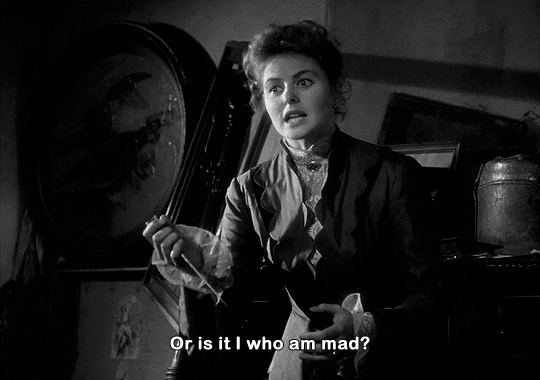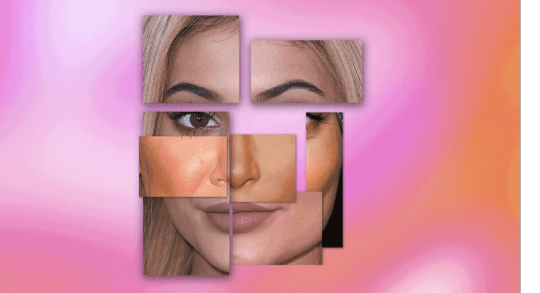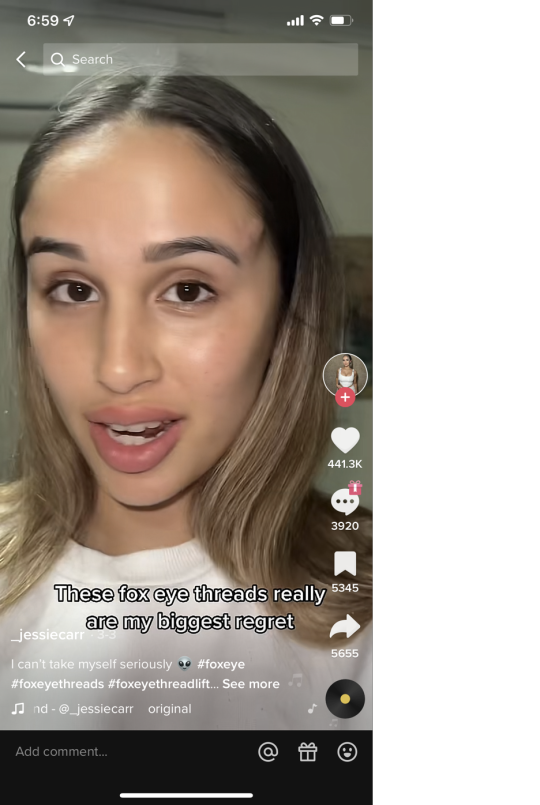Text
Week 10: Digital Citizenship and Conflict: Social Media Governance
I found this week’s reading quite informative and interesting as I learnt more about a term I previously only had a limited understanding of. The term ‘gaslighting’ originated from a 1944 film by the same name (originally a play from 1938), where a manipulative male attempts to gaslight his wife into her believing she has gone insane, for his own personal gain. He does this by switching off the gas lights in the house and denying it when confronted, leading her to believe she has gone insane. After reading both pieces ‘Explainer: What does gaslighting mean?’ by Jessamy Gleeson and 'Drinking male tears: language, the manosphere, and networked harassment’ by Alice E. Marwick & Robyn Caplan, I’m led to believe that the term has not strayed far from its original use of demonising women.
The film portrayed an obvious and head on form of gaslighting, but I found it interesting how this behaviour is more commonly seen in a small, subtle scale in domestically violent relationships. Examples of more subtle gaslighting are denial of the gaslightee’s experience (“That wasn’t what happened!”), escalation (“Why would you question this? I wouldn’t lie to you!”), trivialisation (“You’re too sensitive, this is nothing”), and countering (“That wasn’t what happened, this was”) (Gleeson, 2018). I think it is really important to be able to recognise this toxic behaviour, especially as a female, and not allow yourself to be manipulated by men and other individuals.

Another point I found interesting was the emergence of Men’s Rights Movement which rooted in the early 1970’s. After witnessing the emergence of the Women’s Rights Liberation movement, men’s rights scholars acknowledged the harm that sexism had on women but accentuated how strict gender roles and a patriarchal society were just as harmful on men.
The early goal of this movement was to “attract men to feminism by constructing a discourse that stressed how the male role was impoverished, unhealthy, and even lethal for men” (A. E. Marwick and R. Caplan, 2018, p 546). In the 1980’s the movement experienced a harsh divide where one side was still fighting against sexism, but the other side chose to embrace traditional masculinity and values.
I found this especially interesting as I remember a couple of years ago there was a big surge of men and surprisingly women, advocating for the Men’s Rights Movement as a way to belittle the Feminist and #MeToo Movement. It was renamed as ‘Meninism’ but quickly died down due to and unknown cause. I find this quite humorous as they did not understand the original intent of the movement and decided to take an opposing road.
TRIGGER WARNING: SEXUAL ASSUALT, DOMESTIC VIOLENCE

References:
Alice E. Marwick & Robyn Caplan, 'Drinking male tears: language, the manosphere, and networked harassment' Feminist Media Studies Volume 18, 2018 - Issue 4: Pages 543-559
Jessamy Gleeson, Research Officer, School of Global, Urban & Social Studies, RMIT University, 'What does Gaslighting Mean?’ The Conversation, 2018, <https://theconversation.com/explainer-what-does-gaslighting-mean-107888>
0 notes
Text
Week 8: Digital Citizenship and Software literacy: Instagram Filters
Instagram filters are a new plague in our society. Throughout my entire life I have had to consume media that is constantly looking for new ways to make women insecure and not feel contempt with being themselves. Being amongst the first generation to genuinely grow up on social media, I got to witness the shift of our online presence. I remember when face altering filters had just been released, on Snapchat, and it was just a way to make yourself look goofy, with a rainbow pouring out of your mouth for example.

During these times, our online media presences were much more relaxed and genuinely just a way to show others what was going on in your day-to-day life. With the rise of more Instagram filters, I noticed a change in how everyone perceived themselves online. Instagram went from a platform that you would post chill, authentic photos of yourself and your life, to a place where you curate your every post to ensure your online persona meets your specific, and high, standards. Instagram filters assisted with this change in the way that made everyone think they should be flawless, one hundred percent of the time. Instead of posting stories to show off your candid, authentic self, the pressure to look drop dead beautiful was enforced and women started abusing these filters in a way. I have constantly been hearing women compare and bash their true, authentic selves to the way the filter makes them look. This is just unrealistic, these filters slim your face, slim your nose, enlarge your eyes and mouth, just to name a few. They pick and choose the Eurocentric features they like the most and try to enforce it upon women from all around the world. As well as this they pick facial features to make a trend and belittle women who don’t possess them naturally. Which is just ridiculous, in my opinion, as body parts should not be trendy but rather something you embrace.

These filters can cause serious issues such as Body Dysmorphic Disorder. Body Dysmorphic Disorder shares some similarities to Digitised Dysmorphia which is arguably created through the use of digital modification apps. Phillips, a leading expert in Body Dysmorphic Disorder has said: Everyone with BDD is concerned with some aspect of their appearance that they consider ugly, unattractive, or “not right” in some way. Everyone is preoccupied—thinking and worrying about their body excessively. Everyone is distressed or doesn’t function as well as they might because of their preoccupation. The details differ from person to person, but these basic themes are shared by all. (Phillips, 1998: 32).
References:
Phillips, KA. (1998). ‘The Broken Mirror: Understanding and Treating Body Dysmorphic Disorder.’ Oxford University Press: Oxford.
0 notes
Text
Week 7: Digital Citizenship and Health Education: Body Modification on Visual Social Media
In this week’s lecture I found a couple interesting points. I learnt about the idea of pornification on social media as well as online retail stores such as Fashion Nova. It has been argued that women present a highly sexualised version of themselves online to gain more traction and attention. It has been brought to my attention that these are conformances to heteronormative notions of attractiveness – which would essentially be them appealing to the male gaze. I have always noticed how sexualised some influencers pose and present themselves but have never made the link to the aesthetics of commercialised pornography. This does make sense to me now as the notion of ‘sex sells’ has been around for so long.
This does not just refer to the way that they pose, but as well as the body modifications that both men and women undergo to make themselves appear more ‘attractive’. For women this can include
- Bigger lips
- Slimmer jaw
- Higher cheekbones
- Smaller waist and large buttocks.
For men, they find themselves enhancing their lips, as well as enhancing their jaw line to be stronger and more well-defined.

After the big trend of receiving body modifications, I have recently noticed a lot of individuals who had undergone work finding that they regret having it done or had been botched by their plastic surgeons. For women in particular, I had noticed a big trend of receiving Brazilian butt lifts, filler in the face and fox eye lifts, to name a few. Specifically, I had engaged with a user on Tik Tok, @_jessiecarr, who had received fox eye threads but ended up having swollen temples causing her to resemble the alien emoji. She has now had them removed and claims it is her biggest regret.

I do not find this surprising, as stated in the reading ‘Plastic Surgery-Related Hashtag Utilization on Instagram: Implications for Education and Marketing’ (Robert G Dorfman, Elbert E Vaca, Eitezaz Mahmood, Neil A Fine and Clark F Schierle), board certified plastic surgeons are underrepresented amongst physicians posting top plastic surgery related content on Instagram. The most top posted videos are amongst individuals who are not board-certified getting it done themselves and promoting other to do the same. This is unhealthy as there is not much education on the implications and harm that these procedures can cause, resulting in higher risk for patients looking to receive these procedures. It is important to be aware of the risks and lack of safety for patients, seeking these procedures from physicians who are not board-certified.
It is very important to be mindful and critical of the sociological and psychological consequences of social media campaigns that promote a specific body type.
References:
Robert G Dorfman, Elbert E Vaca, Eitezaz Mahmood, Neil A Fine and Clark F Schierle, ‘Plastic Surgery-Related Hashtag Utilization on Instagram: Implications for Education and Marketing’, Aesthetic Surgery Journal, Volume 38, Issue 3, March 2018, pp 332–338
0 notes
Text
Week 6: Digital Citizenship Case Study: Social Media Influencers and the Slow Fashion Movement
Thrifting has become a very wide known trend these past couple of years. Second-hand stores were a way for people from low-income backgrounds to buy quality clothing items at a lower price. This was regarded as an environmentally sustainable way to purchase clothing. Historically, there was a big stigma on individuals who would purchase clothes from thrift stores for everyday use, as they were seen as lower than.
In recent times there has been a surge of resellers entering the thrifting community which makes it much more difficult for the previous demographic to access these affordable items. Resellers tend to purchase a large amount of items from these stores and jack up the prices on their online stores/sites such as Depop with the goal of making a profit. The gentrification of thrifting has had a negative effect on the low-income residents to whom it was previously intended for as it makes it less accessible as well as increased prices have made it more difficult to purchase (Ronobir, 2020, p. 54). Although unclear what exactly caused this trend, an increase of online influencers portraying their experiences thrifting could have had an effect. I had noticed that one influencer in particular, Emma Chamberlain, had created a large fanbase who were encouraged to scavenge through these stores. In her early Youtube days, Emma had many videos where she would take us along with her during her visits to the thrift stores.

This was a good way to destigmatise the idea around thrifting and encouraged people to be more environmentally sustainable with their purchases, instead of bulk buying from fast fashion brands such as Shein. Although the traction has its positives, the price-increase found in thrift stores in recent times is quite discouraging, I have even found myself purchasing less items from second hand stores than I previously did because although environmentally sustainable, it sometimes does not feel worth purchasing a second-hand garment, which was most likely sourced from a fast fashion brand, for the same price that you could buy it first-hand from a normal retail store. I would however, encourage individuals to be more aware when purchasing clothing and to try buy more sustainable clothing when they can despite all of these roadblocks.
References:
Ronobir Rajjo, JK. 2020, ‘The socioeconomic causes and effects of the gentrified thrifting experience’ in Finxerunt: Across the Spectrum of Socioeconomics. Version 2, Zenedo.
Zhen Lai, Claudia E. Henninger and Panayiota J. Alevizou ‘An Exploration of Consumers’ Perceptions Towards Sustainable Fashion – A Qualitative Study in the UK’, in Sustainability in Fashion A Cradle to Upcycle Approach, edited by Henninger, C.E., Alevizou, P., Goworek, H., Ryding, D. (Palgrave: 2017).
0 notes
Text
Week 5: What is Digital Citizenship? Hashtag Publics, Political Engagement and Activism
0 notes
Text
Week 3: Digital Community: Tumblr Case Study
Being amongst the first generation to grow up on social media, I have personally witnessed the peak and fall of the social media platform Tumblr. Tumblr was a great platform to use for niche communities as it really allowed people to connect based on mutual interests and likes. It was a great way for people to explore their interests and engage with others who felt the same.
Personally, my first proper experience with online activism and feminism was on Tumblr, probably back in early 2012. It taught me about world issues as well as issues amongst smaller communities and really opened my eyes and allowed me to be a lot more open-minded. For that I am grateful as it genuinely has shaped me into the person I am now. This site was seen as a safe space for teenage girls as other sites did not really give them the time of day. In 2013, it was found that 46% of the sites monthly visitors were between 16 and 24 (Business Insider). The anonymity aspect of Tumblr blogs really allowed teenage girls to express their thoughts and feelings as it was seen as a safe space, compared to sites such as Twitter and Facebook where backlash for their posts was essentially an expected outcome. When posting about feminism online, a lot of women found Tumblr to their ideal platform as they had a lot more control over the engagement and replies their post received and found a mutual understanding that they would not be as heavily judged and ridiculed like they are on other sites. Sites like Facebook are seen as useful to educate peers about feminist issues, and call out local issues, but “Tumblr has gained a reputation, …, as a feminist-friendly space where sophisticated discussions about intersectionality, patriarchy, and protest frequently occur.” (Keller, 2019). A community like this is very important to have, as a female, as being able to share your feminist/sexist experiences without ridicule and judgement is a good way to find healing and positivity.
References:
Keller, J., 2019. “Oh, She’s a Tumblr Feminist”: Exploring the Platform Vernacular of Girls’ Social Media Feminisms. Social Media + Society, 5(3), p.1-11.
Smith, Cooper. 2013. “Tumblr Offers Advertisers A Major Advantage: Young Users, Who Spend Tons Of Time On The Site”, Business Insider, <https://www.businessinsider.com/tumblr-and-social-media-demographics-2013-12>
1 note
·
View note